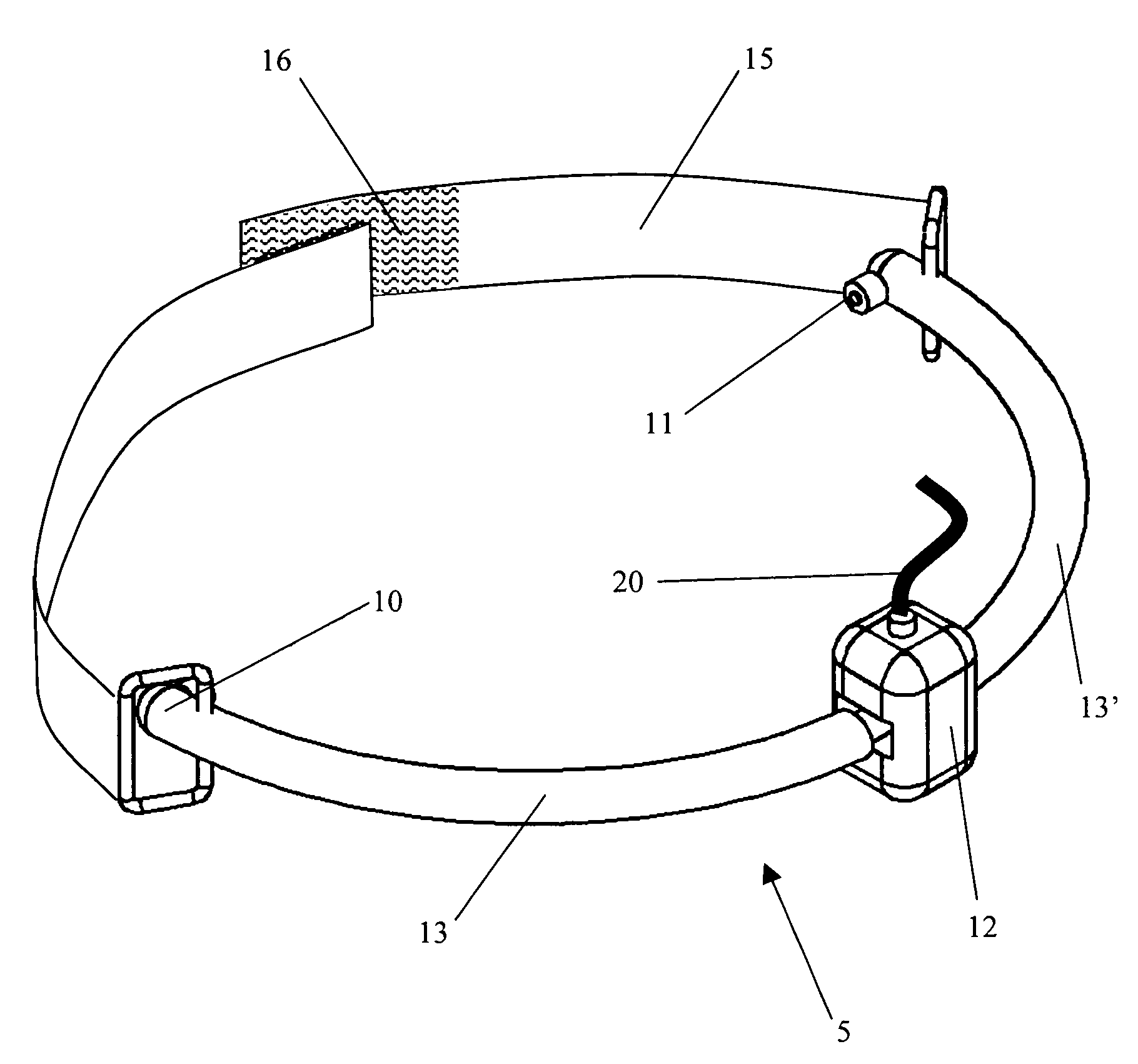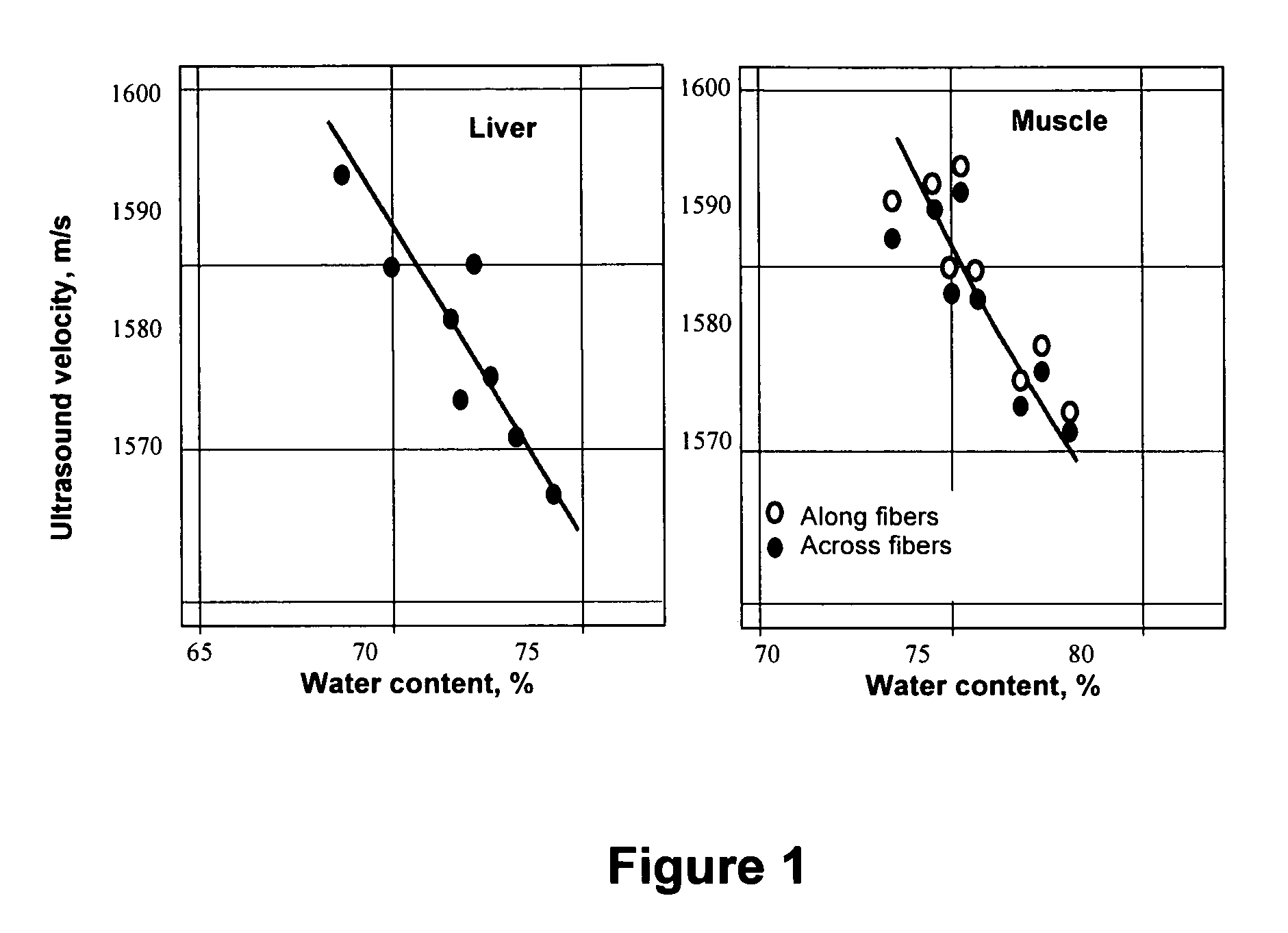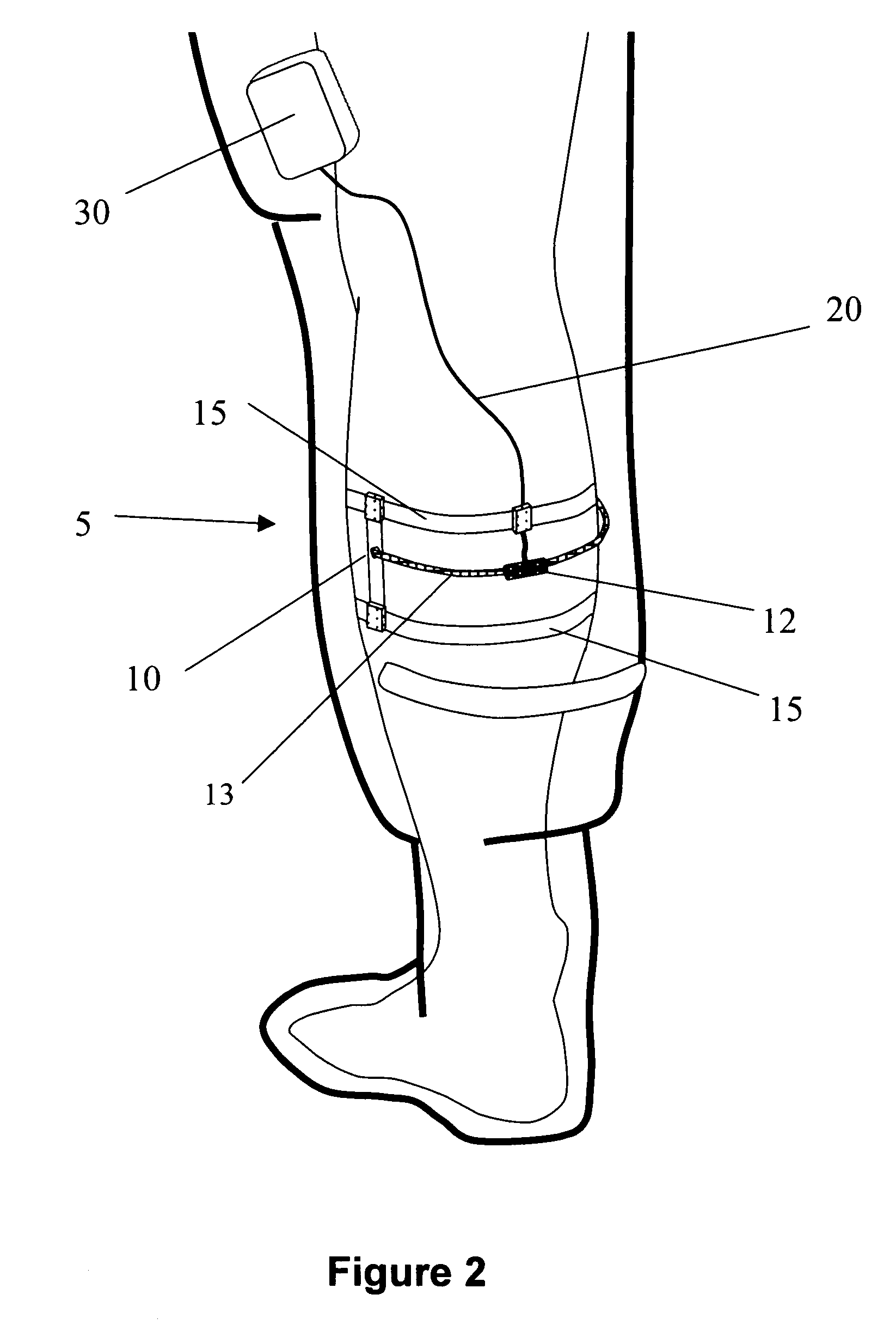Ultrasonic water content monitor and methods for monitoring tissue hydration
a technology of ultrasonic water content and monitor, which is applied in the field of ultrasonic measurement of biological tissue parameters, can solve the problems of affecting brain function, muscle aches and pains, and reducing cognitive and physical work ability, and achieves the effect of negatively affecting subject's performan
- Summary
- Abstract
- Description
- Claims
- Application Information
AI Technical Summary
Benefits of technology
Problems solved by technology
Method used
Image
Examples
first embodiment
[0037]The general concept of the proposed MWC and dehydration monitor of the invention is illustrated in FIGS. 2 and 3. They show an embodiment designed preferably for the use by soldiers during training or deployment. The probe is intended for application on a human calf and for examination of the soleus muscle therein. The positioning of probe and transducers in relation to anatomy of the cross-section is shown in FIG. 3.
[0038]The depicted MWC dehydration monitor is composed of a small lightweight probe 5 with miniature sensors 10 and 11 fixed on the soldier's calf by means of elastic straps 15. This load does not impede the soldier's work performance and can be placed on the body for all the time necessary for monitoring. The probe 5 is connected via cable 20 with a portable data acquisition and accumulation electronic unit 30 that is placed in a pocket or a special compartment in the soldier's uniform. The electronic unit 30 is battery-powered, has low power consumption, and cou...
second embodiment
[0049]the MWC and dehydration monitor probe with a strain gage based angle sensor 122 is shown in FIG. 8. FIG. 9 shows a cross-sectional view of this angle sensor. The basic part of the sensor is a flat spring 97 with strain gages 90 and 90′ glued on the surface of the spring 97. Various types of strain gages such as for example a semiconductor strain gage ESU-025-1000 (Entran, USA) can be used in this angle sensor. The housing of the angle sensor 122 is covered with an elastic cover 93. As one bearing tube 13 rotates about the other bearing tube 13′ about the miniature hinge 95, the flat spring extends or contracts its length. That length extension is detected by the strain gages 90 and 90′ and converted into the angle information since the geometry of the angle sensor 122 is known and fixed.
[0050]Embodiments of the water content monitor illustrated in FIGS. 2–9, can be operated with an electronic unit shown in FIG. 10. Block diagram of FIG. 10 shows one of possible embodiment of t...
PUM
 Login to View More
Login to View More Abstract
Description
Claims
Application Information
 Login to View More
Login to View More - R&D
- Intellectual Property
- Life Sciences
- Materials
- Tech Scout
- Unparalleled Data Quality
- Higher Quality Content
- 60% Fewer Hallucinations
Browse by: Latest US Patents, China's latest patents, Technical Efficacy Thesaurus, Application Domain, Technology Topic, Popular Technical Reports.
© 2025 PatSnap. All rights reserved.Legal|Privacy policy|Modern Slavery Act Transparency Statement|Sitemap|About US| Contact US: help@patsnap.com



